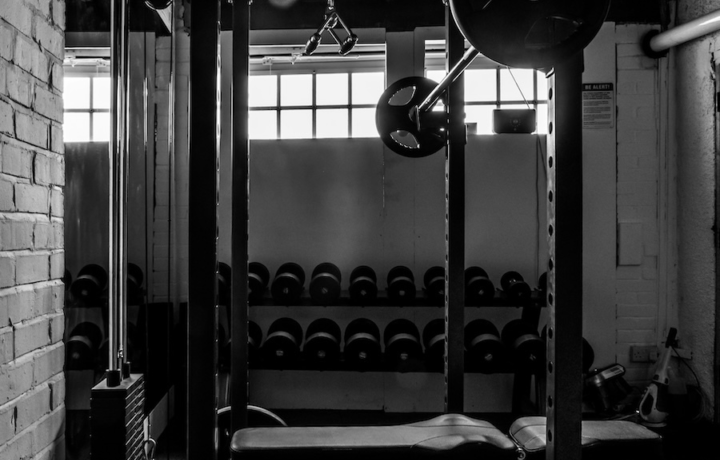Exercise
Close-Grip Barbell Bench Press

Close-Grip Barbell Bench Press
How to Perform
- Set up with your back flat on a bench, feet planted firmly on the floor, and position yourself so that your eyes are directly under the barbell.
- Grip the barbell with hands closer than shoulder-width apart (approximately 8-12 inches between your hands), ensuring your wrists are straight and thumbs wrapped around the bar.
- Unrack the barbell by extending your arms upward, then carefully bring it directly over your lower chest area, keeping your shoulder blades retracted and pressed into the bench.
- Take a deep breath and brace your core as you lower the barbell in a controlled manner toward your lower chest or upper abdominal area.
- Keep your elbows tucked close to your torso at about a 45-degree angle as you descend, avoiding flaring them outward.
- Lower the bar until it lightly touches your chest, maintaining tension throughout your upper body and keeping your wrists neutral.
- Exhale as you press the barbell back up in a straight line by driving through your chest and triceps, fully extending your arms without locking out your elbows.
- Perform your desired number of repetitions, maintaining proper form throughout, then safely rack the barbell by extending your arms and guiding it back onto the rack supports.
Important information
- Keep your shoulders retracted and upper back tight throughout the entire movement to protect your shoulder joints.
- Ensure your feet remain planted firmly on the floor to maintain stability and proper spinal alignment.
- If you experience wrist pain, try adjusting your grip or using a slightly wider hand position.
- Focus on using your triceps rather than bouncing the bar off your chest for maximum effectiveness and safety.

Close-Grip Barbell Bench Press
Exercise Details
Primary Muscles
Muscle Groups
Mechanic
Risk Areas
Built for progress
Take the guesswork out of training
Create personalized AI-powered workout plans that evolve with you. Train smarter, track every rep and keep moving forward, one workout at a time.






The Close-Grip Barbell Bench Press stands as a powerful compound movement that targets your triceps as the primary muscle group while also engaging your chest. This intermediate-level exercise has earned its place in both powerlifting and bodybuilding regimens for its remarkable strength-building properties. Unlike the standard bench press where your hands are positioned wider, the close-grip variation places your hands roughly shoulder-width apart or slightly closer, shifting substantial tension to the triceps while still recruiting the pectorals.
What makes this exercise particularly valuable is its carryover to other pressing movements. As you develop stronger triceps through consistent close-grip work, you'll likely notice improvements in your traditional bench press, overhead press, and even pushing movements in everyday life. The exercise creates significant tension through the triceps' entire range of motion, particularly at the lockout phase where these muscles are most responsible for extending the elbow joint.
For powerlifters, the close-grip bench press serves as an excellent accessory movement to build pressing strength through a slightly different mechanical pattern than the competition bench press. Bodybuilders value this exercise for its ability to add thickness and definition to the triceps, particularly the lateral and medial heads, while still providing quality stimulus to the lower chest fibers.
The beauty of the close-grip bench press lies in its simplicity and effectiveness. Using a barbell allows for consistent progressive overload—the fundamental principle behind strength development. As an intermediate lifter, you'll appreciate how this movement can help break through plateaus in your training by targeting potential weak points in your pressing chain. The exercise delivers significant training economy: maximum results from minimal equipment, making it a staple in strength programs across various training philosophies.
Remember that while this exercise is tremendously effective, proper execution with appropriate weight is essential to maximize benefits while minimizing strain on the wrists, elbows, and shoulders.
FAQ - Close-Grip Barbell Bench Press
The close-grip bench press primarily targets the triceps (especially the lateral and medial heads), while also engaging the chest muscles (particularly the lower pectorals) and anterior deltoids as secondary movers. Your core and upper back also work as stabilizers throughout the movement.
Position your hands approximately shoulder-width apart or slightly closer (8-14 inches between hands), but avoid an extremely narrow grip that puts excessive strain on your wrists. Your forearms should remain vertical when viewed from the front at the bottom position of the movement.
Keep your wrists straight and stacked directly over your elbows throughout the movement, never allowing them to bend backward. Consider using wrist wraps for additional support, especially with heavier weights, and ensure the bar rests on the base of your palm rather than toward your fingers.
For optimal results, perform the close-grip bench press 1-2 times weekly with at least 48 hours between sessions targeting the same muscle groups. If you're using it as an accessory movement, schedule it after your main bench press day or on a dedicated triceps/push day.
The most common mistakes include rounding your lower back, rotating your hips instead of keeping them square, rushing through the movement, and not hinging properly at the hips. Focus on maintaining a neutral spine, moving with control, and keeping your standing knee slightly soft rather than locked.










